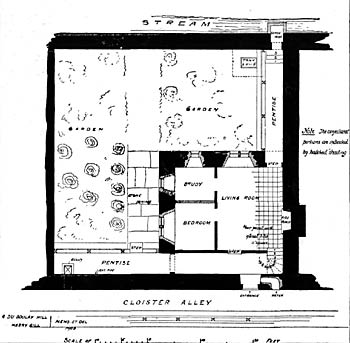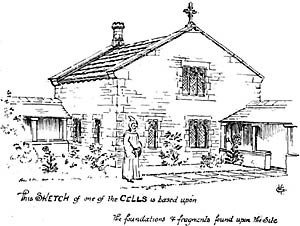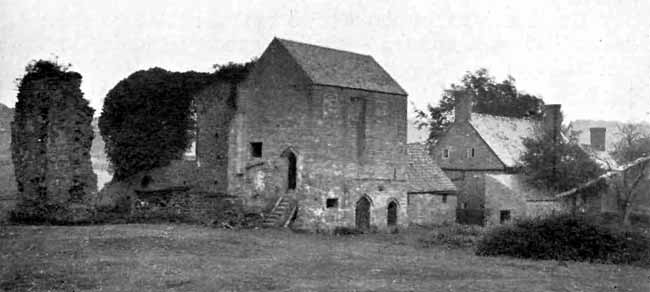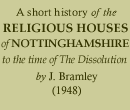< Previous | Contents | Next >
Beauvale Priory
 |
| Carthusian monk. |
This priory for Carthusian monks was erected in a lovely valley about ten miles north-west of Nottingham in the parish of Greasley. Part of the site was excavated by The Thoroton Society of Nottinghamshire some years ago, and a valuable account of the work which was carried out appeared in the Society's Transactions of the year 1908.
The first Carthusian monastery was founded by St. Bruno of Cologne in 1086 in the mountains near Grenoble, but he soon left for other work and their Rule was drawn up by a successor named Guigo. The severity of the Rule under which the monks lived kept their numbers low, although their church services were conducted with great ceremony. The Carthusians derived a considerable income from the manufacture and sale of Green Chartreuse, their well-known liqueur, which they first made at their monastery near Grenoble, then at Tarragona on the east coast of Spain, and then in Lombardy after their expulsion from Spain by the Spanish Republic. The proceeds of the sale are used for building, education and similar purposes and are no benefit to the individual monks.
This Order was never the subject of revival or reform and at the Dissolution was the only Order to offer corporate resistance. The Carthusians had no concern with anything outside their monastery, and as has been said, the intention of all Carthusian discipline was to make possible for the monk contemplation in the fullest sense of that mystic, spiritual beholding of God, called the Beatific Vision.
 |
| Beauvale Priory. Detail of monk's cell. |
The priory of Beauvale or Pulchra Vallis in Parco de Gressley, was the last monastery erected in this county, and was founded in 1343 for twelve monks (later increased to fourteen) by Nicholas de Cantelupe of Greasley Castle nearby. Other endowments by the family and others followed those of the founder, and included the right to mine coal in Selston, and this the monks seem to have done although they also let some of their pits on lease. The Foundation Charter was witnessed by the Archbishop of York, three bishops, three earls, three knights and several other persons. Among their properties was "le haye of Willey adjoining their grounds for the welfare of the soul of Lord Edward Balliol King of Scotland". Two of the Beauvale manuscripts are in the Bodleian Library at Oxford.
In 1422 they had a Beauvale monk in the monastery prison near Grenoble and the prior wrote to Beauvale asking them to fetch him back and pay one year's cost of maintaining him or the cost of a new prison, as he alleged that the prisoner had destroyed several of the prisons in which he had been confined and was a scandal to the neighbourhood. The result, unfortunately, is not recorded.
 |
| Beauvale Priory. Sketch of monk's cell. |
When the Act of 1536 ordered the closure of all religious houses having less than £200 a year income, Beauvale was liable to closure as their income was just under that sum, but to obtain immunity the priory paid £166 13s. 4d., but in vain; and on 18th July, 1539, Dr. London took its surrender. Thomas Woodcock, the last prior, had only been appointed so recently as December 1537, but he was none the less awarded the comfortable pension of £26 13s. 4d. (about £1,300 a year) while eight monks received from £5 to £6 a year, and the two aged lay brothers £2 each. It is very unusual to find lay brothers at this late date.
About two years after the surrender the site was apparently acquired by Sir William Huse or Hussey of London on terms unknown. At the date of the surrender of Beauvale the prior of Witham, the first Carthusian house erected in England, was a certain John Huse or Hussey, but there is no evidence of any relationship between these two Husseys.
Robert Lawrence, the then prior of Beauvale, and three others, having been found guilty of refusing to accept the king's supremacy and renounce Papal authority, were executed at Tyburn on 4th May, 1535 in barbarous and obscene circumstances.
A picture of some of the priory buildings which still remain is included in this pamphlet.
 |
| Beauvale Priory. General view from the north-west. |
